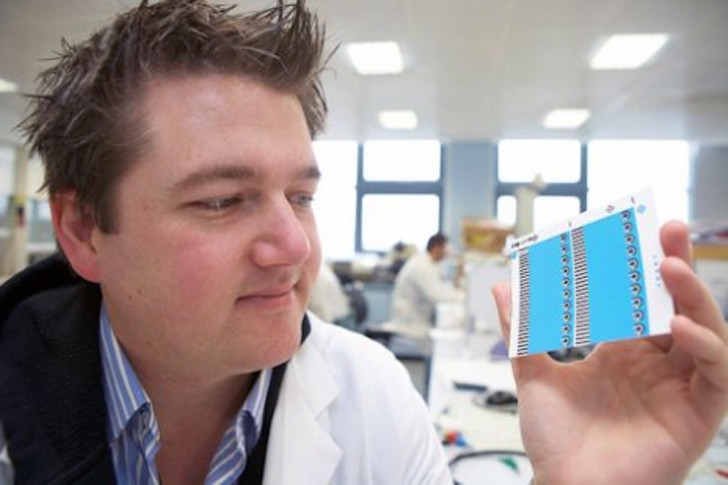The UK’s Engineering and Physical Sciences Research Council (EPSRC) is investing heavily into 3D printing and the project’s being undertaken with the government body’s funds are pretty heavy duty. For instance, with their £2.7m EPSRC grant, the University of Nottingham is hoping to 3D print medications, electronics, and models for understanding the human brain. With their £700,000, the University of Southampton will be 3D printing fiber optics. And the National Facility for Innovative Robotic Systems at the University of Leeds is filled with all sorts of 3D printing goodies. Now, Manchester Metropolitan University is researching the 3d printing of graphene batteries, thanks to a EPSRC grant of £500,000.
Due to graphene’s high conductivity and small structure, researchers at Man Met hope to 3D print batteries, supercapacitors, and energy storage devices both for computing technologies, as well as renewable energy systems. With the grant, Prof. Craig Banks and Matt Pilling will be developing a graphene 3D printer to create these super batteries from unique 3D structures.
Prof. Banks, Associate Dean for Research and Professor in Electrochemical and Nanotechnology, explains that this technology could be used for the storage of clean energy, “Energy storage systems (ESS) are critical to address climate change and, as clean energy is generated through a variety of ways, an efficient way to store this energy is required. Lithium and sodium ion batteries and super/ultracapacitors are promising approaches to achieve this. This project will be utilising the reported benefits of graphene – it is more conductive than metal – and applying these into ESS.”
He continues, “In addition to the choice of material, the overall architecture of ESS are of critical importance. The architecture of ESS can be improved through the use of 3D structures, which have high surface areas, good electrical properties and hierarchical pore structures/porous channels. We’re trying to achieve a conductive ink that blends the fantastic properties of graphene with the ease of use of 3D printing to be manipulated into a structure that’s beneficial for batteries and supercapacitors.”
At the moment, the process of 3D printing graphene requires an hour of curing per layer, something that the team hopes to overcome, Prof. Banks says, “We need to figure out a way to cure it directly, possibly by shining a UV light on to it, as anything above a micron level takes a long time. Ideally, we could have the brilliant scenario where you just plug in and go – printing whatever structure you want out of graphene from a machine on your desk.”
The project will continue over the course of the next three and a half year course and there may be no one better to lead it. As a leading researcher in graphene, Prof. Banks was one of the most highly cited researchers of 2014.




